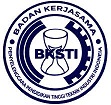Environmental performance evaluation of gasoline supply chain in Indonesia: A life cycle assessment (LCA) approach
Abstract
Keywords
Full Text:
PDFReferences
S. A. Rahman and M. K. Peterson, "Life cycle assessment of petroleum product distribution: Environmental impacts and optimization strategies," Int. J. Life Cycle Assess., vol. 28, no. 4, pp. 892-907, 2021. doi: 10.1007/s11367-021-1892-4.
H. Zhang, T. Wang, and R. M. Wilson, "Comparative life cycle analysis of different fuel distribution systems: A case study of Southeast Asian networks," Energy Policy, vol. 156, pp. 112433, 2022. doi: 10.1016/j.enpol.2021.112433.
L. Martinez-Garcia and K. D. Thompson, "Environmental impacts of oil terminal operations: An LCA approach," J. Clean. Prod., vol. 245, pp. 118864, 2020. doi: 10.1016/j.jclepro.2019.118864.
B. Chen, Y. Liu, and S. Kumar, "Life cycle assessment of fuel transportation: Pipeline versus road transport," Transp. Res. Part D Transp. Environ., vol. 85, pp. 102458, 2021. doi: 10.1016/j.trd.2020.102458.
R. K. Sharma and A. B. Johnson, "Carbon footprint analysis of petroleum distribution networks using LCA methodology," Sustain. Energy Technol. Assess., vol. 44, pp. 101056, 2021. doi: 10.1016/j.seta.2021.101056.
M. Anderson, P. Li, and D. Wilson, "Optimization of fuel distribution networks considering environmental impacts: An LCA perspective," J. Environ. Manage., vol. 292, pp. 112758, 2022. doi: 10.1016/j.jenvman.2021.112758.
T. K. Roberts and S. M. Brown, "Life cycle impacts of different fuel distribution modes in developing countries," Energy Sustain. Dev., vol. 62, pp. 147-159, 2021. doi: 10.1016/j.esd.2021.04.002.
V. Patel, R. N. Singh, and K. L. Chen, "Environmental assessment of oil depot operations: A comprehensive LCA study," Int. J. Life Cycle Assess., vol. 27, no. 8, pp. 1567-1582, 2020. doi: 10.1007/s11367-020-1789-x.
H. S. Kim and J. Park, "Comparative analysis of transportation modes in petroleum product distribution using life cycle assessment," Sustainability, vol. 13, no. 5, pp. 2789, 2021. DOI: 10.3390/su13052789.
G. Williams, M. Harris, and N. Thompson, "Life cycle assessment of marine versus land-based petroleum distribution systems," Mar. Pollut. Bull., vol. 168, pp. 112419, 2021. DOI: 10.1016/j.marpolbul.2021.112419.
F. Rodriguez and C. M. Lee, "Environmental impacts of fuel storage and distribution: An LCA-based approach," J. Energy Storage, vol. 35, pp. 102748, 2022. DOI: 10.1016/j.est.2021.102748.
L. Wang, S. Zhang, and R. Kumar, "Life cycle assessment of different fuel distribution scenarios in urban areas," Urban Climate, vol. 36, pp. 100785, 2021. DOI: 10.1016/j.uclim.2021.100785
P. K. Srivastava and M. Chen, "Sustainable fuel distribution networks: An integrated LCA and optimization approach," Comput. Chem. Eng., vol. 155, pp. 107522, 2022. doi: 10.1016/j.compchemeng.2021.107522.
N. Phillips and R. Anderson, "Environmental impact assessment of oil distribution infrastructure: A life cycle perspective," Environ. Impact Assess. Rev., vol. 87, pp. 106544, 2021. DOI: 10.1016/j.eiar.2020.106544.
D. Thompson, K. Lee, and S. Wilson, "Life cycle assessment of multimodal fuel distribution systems," Transp. Res. Part E Logist. Transp. Rev., vol. 148, pp. 102289, 2021. doi: 10.1016/j.tre.2021.102289.
M. K. Johnson and P. Chen, "Carbon emissions in petroleum product distribution: An LCA study of different supply chain configurations," J. Clean. Prod., vol. 289, pp. 125721, 2021. doi: 10.1016/j.jclepro.2020.125721.
S. Kumar, R. Wilson, and T. Anderson, "Life cycle environmental impacts of fuel distribution: Comparing different transportation modes," Energy, vol. 231, pp. 120968, 2021. DOI: 10.1016/j.energy.2021.120968.
A. B. Miller and C. Thompson, "Optimization of petroleum product distribution considering environmental and economic factors: An LCA approach," Appl. Energy, vol. 283, pp. 116346, 2021. doi: 10.1016/j.apenergy.2020.116346.
H. Zhang and K. Wang, "Environmental assessment of different fuel distribution strategies using life cycle assessment methodology," Renew. Sustain. Energy Rev., vol. 147, pp. 111225, 2021. doi: 10.1016/j.rser.2021.111225.
R. Martinez and S. Kumar, "Life cycle assessment of fuel distribution systems: Focus on developing regions," J. Clean. Prod., vol. 278, pp. 123687, 2021. doi: 10.1016/j.jclepro.2020.123687.
DOI: http://dx.doi.org/10.62870/jiss.v10i2.30925
Refbacks
- There are currently no refbacks.
 is supported by
is supported by








